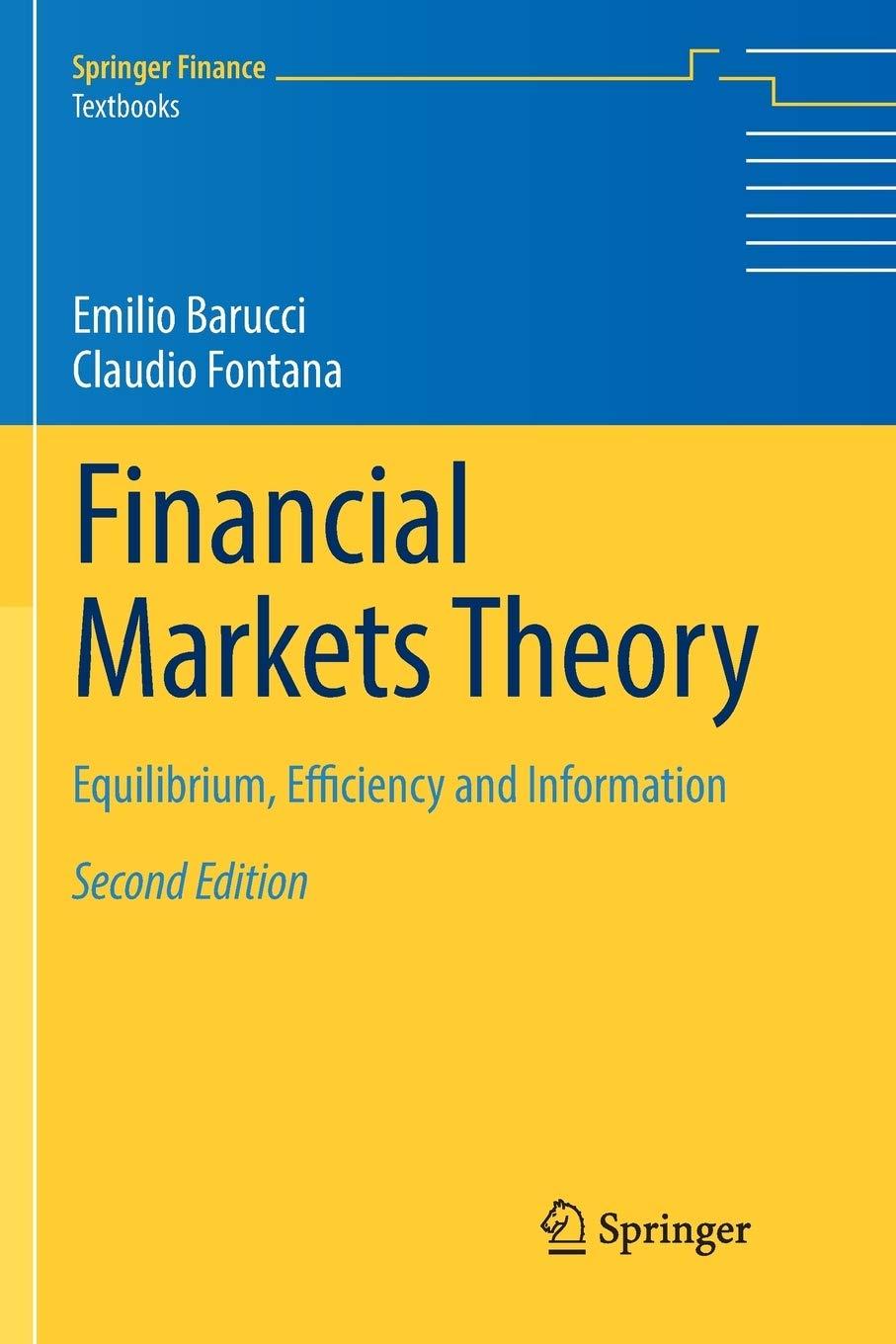Consider a two-period (i.e., (t in{0,1}) ) economy populated by (I) risk neutral agents (i=1, ldots, I)
Question:
Consider a two-period (i.e., \(t \in\{0,1\}\) ) economy populated by \(I\) risk neutral agents \(i=1, \ldots, I\) and where a single risky asset is traded, delivering at date \(t=1\) the random dividend \(\tilde{d}\). Denoting by \(z^{i}\) the demand of agent \(i\) (assumed to be bounded), the corresponding profits at \(t=1\) are given by \((\tilde{d}-p) z^{i}\), with \(p\) denoting the price at date \(t=0\) of the asset. All the agents are assumed to share the same prior probability distribution, but observe different private signals \(\tilde{y}^{i}\). At equilibrium, every trader (by the assumption of risk neutrality) maximizes his expected profit, conditioning on the information represented by his private signal and the observation of the market price, as considered in Sect. 8.1. Show that, in correspondence of a Green-Lucas equilibrium, the expected gains from trading of each agent are null. Therefore, in correspondence of a Green-Lucas equilibrium, there always exists another Green-Lucas equilibrium associated with null optimal demands.
Step by Step Answer:

Financial Markets Theory Equilibrium Efficiency And Information
ISBN: 9781447174042
2nd Edition
Authors: Emilio Barucci, Claudio Fontana





